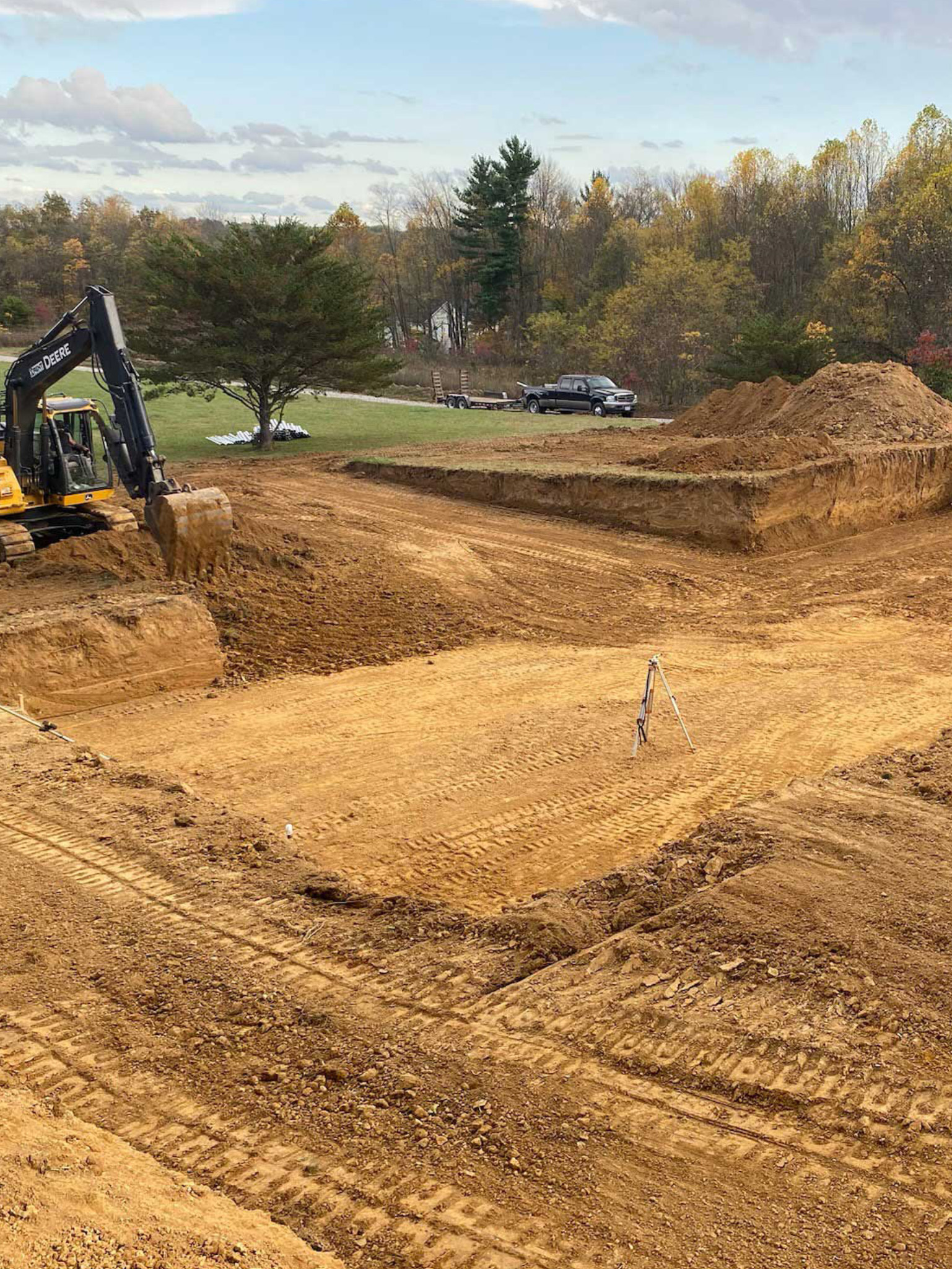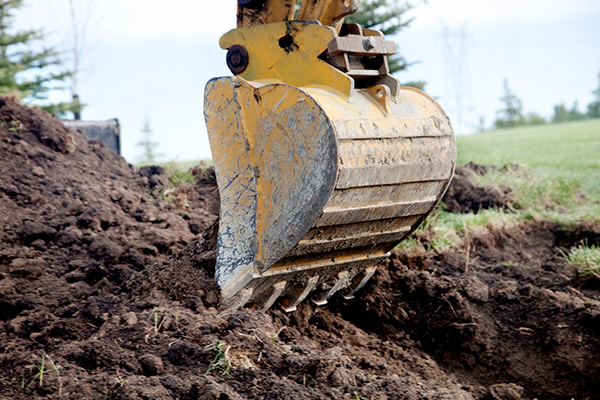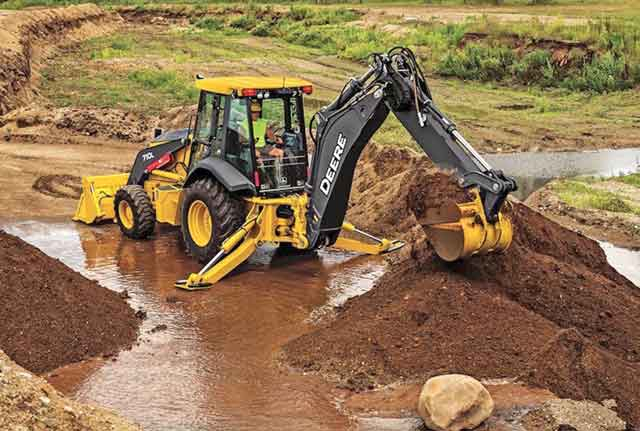Budget Friendly Lancaster Excavation - Quality Excavation at Competitive Rates
Budget Friendly Lancaster Excavation - Quality Excavation at Competitive Rates
Blog Article
Unveiling the Art of Excavation: Pro Tips for Safe and Effective Excavating
As soil is transformed and earth is relocated, the ins and outs of excavation disclose themselves, demanding an eager understanding of equipment, soil make-up, safety procedures, and ecological factors to consider. The proficiency required to navigate these elements effectively can suggest the difference in between an effective excavation project and a prospective calamity.
Significance of Appropriate Tools
To ensure the security and effectiveness of any kind of excavation project, utilizing the suitable devices is extremely important. The right devices not just boost productivity but additionally alleviate threats related to digging. Excavation projects vary in scope and complexity, ranging from little property landscape design work to large construction undertakings. No matter the job size, having the appropriate devices can make a considerable distinction in the result.
These flexible devices come in numerous dimensions to match different project demands. Small excavators are perfect for smaller sized tasks, while larger excavators take on much more extensive jobs successfully.
Bulldozers excel in jobs that require pushing huge amounts of soil or debris. By spending in the suitable devices, excavation tasks can be finished safely, on time, and with accuracy.
Understanding Dirt Make-up
A detailed grasp of dirt structure is basic for performing excavation jobs with precision and safety. Recognizing the various kinds of dirt is vital as it straight impacts excavation approaches, devices option, and overall project performance. Soil composition generally consists of four main components: sand, silt, clay, and raw material. Each part has distinct properties that influence how dirt responds to excavation procedures.
Sand particles are the largest and offer great water drainage yet use little communication. Silt particles are smaller sized than sand however larger than clay, offering moderate drainage and communication. Clay particles are the smallest and provide high communication yet bad drain. Organic issue, such as rotting plant material, impacts dirt fertility and stability.
Before beginning excavation, conducting soil tests to determine its structure and characteristics is vital. This information helps in picking the ideal equipment, implementing safety and security actions, and developing excavation strategies tailored to the specific dirt conditions - dump truck companies in ohio. By understanding dirt make-up, excavation experts can improve task end results while ensuring safety and security and adherence to best methods
Precaution and Protocols
Understanding dirt composition is the keystone whereupon precaution and protocols for excavation projects are developed, making sure the health of employees and the success of the venture. There are several essential steps that have to be executed to minimize threats and avoid mishaps. when it comes to safety during excavation.
Firstly, prior to any kind of excavating starts, a thorough inspection of the website need to be conducted to determine any prospective risks such as underground utilities, unsteady dirt conditions, or close-by structures that septic ohio could position a risk. It is essential to have a proficient individual look after the excavation procedure to make certain that all security methods are adhered to strictly.
In addition, all employees included in the excavation needs to be effectively trained in risk-free digging techniques and the proper operation of devices. Individual safety devices (PPE) such as construction hats, high presence garments, handwear covers, and safety and security boots need to be put on whatsoever times to lessen the threat of injuries. lancaster excavation. Routine security conferences and tool kit talks need to also be conducted to maintain all employees informed about potential dangers and strengthen risk-free job techniques. By adhering to these safety and security procedures and protocols, excavation jobs can be completed efficiently and without case.
Effective Excavation Preparation
When beginning on an excavation job, precise planning is necessary to make certain effectiveness, security, and effective outcomes. Efficient excavation planning includes several vital actions that are essential for the smooth execution of the job.
When the website assessment is full, the next action is to produce a clear timeline and schedule for the excavation activities. This includes establishing the series of tasks, tools demands, and workforce allowance. Correct organizing helps stay clear of hold-ups and ensures that the task remains on track.

Moreover, interaction amongst all team participants is vital during the preparation stage. Clear instructions, routine updates, and efficient control are necessary for a successful excavation task. By investing time and effort in careful planning, excavation groups can significantly enhance efficiency, reduce risks, and accomplish successful outcomes.

Taking Care Of Environmental Considerations
With boosting emphasis on ecological sustainability in construction practices, managing environmental factors to consider has actually ended up being a vital facet of excavation jobs. Excavation activities have the possible to affect the surrounding atmosphere via soil disintegration, sediment overflow, habitat disturbance, and contamination of water sources. To mitigate these risks, it is vital to implement finest methods that prioritize environmental management.

In addition, proper waste administration is critical to avoid dirt and water contamination. Applying procedures for the disposal of dangerous materials, recycling of waste products, and decreasing the use of damaging chemicals can dramatically reduce the environmental effect of excavation tasks. By incorporating these practices into excavation preparation and implementation, building and construction companies can make sure that their projects are not just secure and productive however also ecologically responsible.
Final Thought
Finally, mastering the art of excavation calls for an extensive understanding of proper tools, dirt structure, precaution, and effective preparation. By complying with these guidelines and considering ecological factors, excavations can be conducted securely and effectively. It is crucial to prioritize safety and efficiency in every digging task to ensure successful end results.
As soil is turned and earth is moved, the intricacies of excavation reveal themselves, requiring an eager understanding of devices, soil make-up, security methods, and environmental factors to consider.To guarantee the safety and performance of any kind of excavation job, utilizing the ideal tools is vital.A detailed understanding of soil structure is fundamental for executing excavation tasks with precision and safety. Comprehending the different types of dirt is vital as it straight influences excavation methods, equipment selection, and overall job effectiveness. By recognizing dirt make-up, excavation specialists can improve project outcomes while guaranteeing safety and adherence to best practices.
Report this page